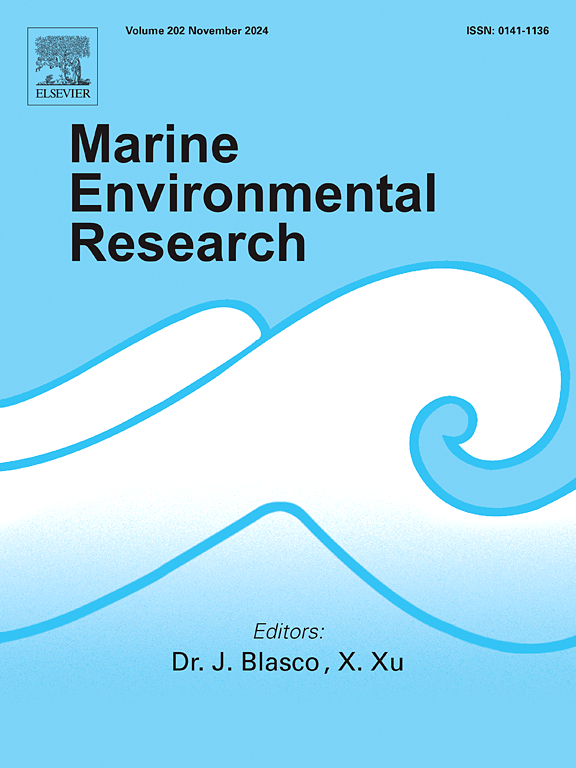Selective herbivory on necrotic tissue can promote tolerance to abiotic disturbances in the seagrass Cymodocea nodosa
IF 3
3区 环境科学与生态学
Q2 ENVIRONMENTAL SCIENCES
引用次数: 0
Abstract
Herbivores play an important role in shaping seagrass community structure, but local stressors can change the ecological significance of herbivory by altering seagrass physiology in ways that affect herbivore preferences. However, few studies have assessed the cumulative influence of diverse local stressors on seagrass ecosystem function in relation to herbivory pressure. Here, we performed a four-month in situ experiment and laboratory feeding trials to examine the effects of two abiotic stressors (light reduction and nutrient enrichment) and simulated herbivory on the physiology of Cymodocea nodosa meadows and associated plant-mesograzer interactions, with the goal of understanding seagrass resilience to multiple disturbances. We found that light reduction primarily affected leaf morphology, resulting in lower shoot surface area, plant biomass and leaf growth rate. Simulated herbivory stimulated the production of phenolic compounds with a potential antimicrobial effect. Nutrient enrichment significantly reduced the C:N ratio and increased seagrass necrosis tissues and growth of opportunistic algae. Further, while higher macroalgal biomass was negatively correlated with C. nodosa performance, epiphyte biomass was positively correlated. Furthermore, our findings evidenced that C. nodosa leaves not only had high nutritional quality under nutrient enrichment, but also the presence of necrotic areas could be a significant driver modulating isopod consumption. We discuss the potential ecological impact of the natural mesograzer preference for necrotic tissue, which may promote the recovery of seagrass communities under local stressors.

求助全文
约1分钟内获得全文
求助全文
来源期刊

Marine environmental research
环境科学-毒理学
CiteScore
5.90
自引率
3.00%
发文量
217
审稿时长
46 days
期刊介绍:
Marine Environmental Research publishes original research papers on chemical, physical, and biological interactions in the oceans and coastal waters. The journal serves as a forum for new information on biology, chemistry, and toxicology and syntheses that advance understanding of marine environmental processes.
Submission of multidisciplinary studies is encouraged. Studies that utilize experimental approaches to clarify the roles of anthropogenic and natural causes of changes in marine ecosystems are especially welcome, as are those studies that represent new developments of a theoretical or conceptual aspect of marine science. All papers published in this journal are reviewed by qualified peers prior to acceptance and publication. Examples of topics considered to be appropriate for the journal include, but are not limited to, the following:
– The extent, persistence, and consequences of change and the recovery from such change in natural marine systems
– The biochemical, physiological, and ecological consequences of contaminants to marine organisms and ecosystems
– The biogeochemistry of naturally occurring and anthropogenic substances
– Models that describe and predict the above processes
– Monitoring studies, to the extent that their results provide new information on functional processes
– Methodological papers describing improved quantitative techniques for the marine sciences.
 求助内容:
求助内容: 应助结果提醒方式:
应助结果提醒方式:


